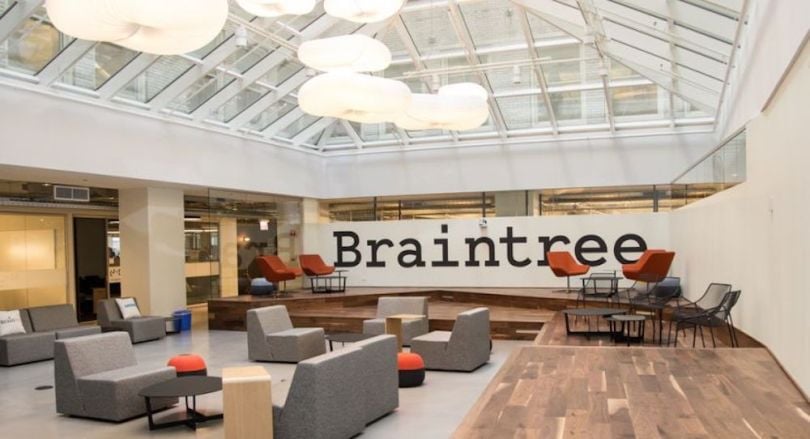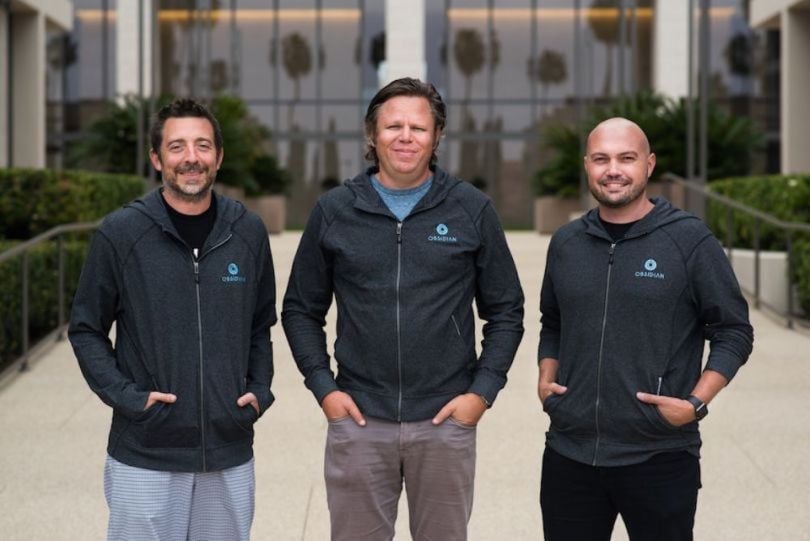Silicon Valley leaders tend to base their hiring decisions on one of three main categories:
-
Skills
-
Learning agility or raw intelligence
-
Culture fit
Adam Grant, an author and professor at Wharton Business School, offers an insightful take on why hiring for culture fit suits agile high growth startups but tends to negatively affect company culture and business when a company goes public.
In this video, Grant talks about a Stanford study that found companies that hired for culture fit were significantly less likely to fail and more likely to IPO than those that hired for skills or learning agility. But that’s not the whole story. Once companies that hired for culture fit went public, they tended to grow at the slowest rate in terms of annual market capitalization.
Why do companies that hired for culture fit tend to plateau when they go public? Consider this: when they're small and agile with innovative ideas, startups excel — everyone is working toward one goal together with the same mindset. However, when a company that hires for culture fit expands and goes public, innovation plateaus and groupthink becomes evident.
Instead, you should focus on cultural contribution or ‘culture add.’ You may be wondering, what’s the real difference between ‘fit’ and ‘add’? Let’s take a look at how they differ.
A guide to supporting the development of rising women in tech.
Cultural Fit vs. Cultural Add
Search the term culture fit and you’ll find a variety of similar definitions that sound something like:
-
“...the individual’s attitudes, values and beliefs being in line with the core values and culture of an organization,” as defined by CompanyMatch.
-
“...a fit is where there is congruence between the norms and values of the organization and those of the person.” as defined by organizational psychologist Adrian Furnham.
-
“...the likelihood that someone will reflect and/or be able to adapt to the core beliefs, attitudes, and behaviors that make up your organization,” as defined by TINYpulse.
Although these definitions vary slightly, in general they focus on how the candidate will assimilate and adapt to the preexisting culture, values, behavioral norms and beliefs of a company. By focusing on culture fit, companies are essentially hiring people that walk, talk and think like one another. To be fair, that’s human nature. It’s comfortable to work with people with whom you share connections, ideas and solutions, which can make for seamless cooperation. However, that’s just the problem.
Working with people who continue to fit into a culture is not only a sure fire way to reinforce unconscious biases, but in the long run, it limits a team’s ability to think creatively and generate innovative ideas and solutions.
Rather than hire for culture fit, companies should seek candidates who have something new to bring to the table, who have different backgrounds and experiences from their own. Alex Moore, Director of Talent Acquisition at management consulting and IT services firm Credera, succinctly explains why culture add is crucial to building a strong, innovative culture:
"Culture adds seed a resilient culture by challenging groupthink that can come from just hiring for fit,” says Moore. “Culture adds have the will and skill to think differently, so proactively infusing them into the culture is vital for growth. If you want your company to continue to grow and evolve, your culture must grow and evolve along with it."
Don’t just take it from us, we asked 12 experts about the importance of hiring for culture add rather than culture fit at their companies.
The Dangers of Hiring for Cultural Fit
Even though it may seem harmless and well-intentioned, hiring for culture fit causes serious issues for companies big and small. We're supporting this claim with three different reasons for why hiring for culture fit is dangerous backed by quotes from experts across the nation.
Hiring for cultural fit reinforces preexisting biases
Biases are a fact of life for every group and organization, including businesses. It’s human nature to categorize and judge people and situations based on past knowledge and experiences. More often than not, those biases are unconscious, lingering just below the surface — unbeknownst to even the most well intentioned of us. But by working to build a homogenous team of culturally fit individuals, you reinforce these biases, whether or not you consciously realize it.

“Women are often expected, regardless of title, to take on the emotional labor of administrative tasks such as note taking or planning team events as supplemental work,” says Terri Shih, Data Analyst at Braintree. “Bias, both internal and external, underlies these issues and becomes reinforced in practices such as hiring based on 'culture fit' or viewing the same qualities as positive in men and negative in women.”
Hiring for cultural fit will cost you great candidates
The best candidates rarely fit a cookie cutter mold. They come from a variety of backgrounds, and expecting them to fit one specific model will cost you great people.
There's no denying it can be difficult to know what to look for if it’s not what you already know to be true, but there is one easy way to avoid this challenge: focus more on the core values and habits that will make someone successful at your organization and less on superficial traits that will have no bearing on success.

“If you only bring on people that are like you and others in your company, you’ll turn away candidates that can expand and enhance your culture,” says Jen Paxton, Director of Talent at Grubhub. “Instead, focus on shared values and work ethic; choose people that will represent the company in the best light, are enjoyable to work with and have the opportunity to share new ideas or bring a different perspective to the table.”

Once you understand what truly matters, hiring for cultural add becomes much easier.
“A lot of people talk about culture fit, and you will probably never find those words on our website,” says Anthony Skinner, CTO at iSpot.tv. “If you’re going to add to our company, if you’re going to help us extend our lead and help us dominate this niche, then we want you here. It’s not a matter of if you fit. If you’re good, you will fit.”

There’s no good way to hire for cultural fit
The fact of the matter is, there’s just no good way to hire for cultural fit. Given its subjectivity, it’s a concept that’s almost impossible to quantify and therefore almost impossible to get right. As a result, “cultural fit” candidates are often those that develop a rapport with the interviewee or hiring manager based on superficial traits rather than core competencies.

“Identifying whether someone is a good culture fit is challenging because it's not always about looking for a fixed set of personality traits,” says Brock Ferguson, Co-Founder of Strong Analytics. “Sometimes it's about being open to considering how a different kind of personality or experience could positively shape our culture. That said, there are a couple of traits that we can't see trading for anything: a generous, collaborative spirit, and internal motivation driven by curiosity and growth.”

Only by codifying your criteria can you hope to make good hiring decisions on a consistent and repeatable basis.
“We spent several months last year revitalizing our company's mission and core values and the biggest way we were able to operationalize those was to ingrain them into our hiring process,” says Amy Dolan, Vice President of People and Culture at DialogTech. “Not asking ourselves about culture fit from the perspective of ‘Would I like to socialize with this person outside of work?’ but rather, ‘Is this person honest, collaborative, selfless and accountable?”
How to Hire for Cultural Add
Now that we've determined that hiring for culture fit is what not to do, let's determine what companies should be doing to build out a strong and diverse culture. We're also tackling this from three different angles, and continuing to incorporate quotes from experts on how they're implementing these practices.
Change the way you think about culture
A strong company culture doesn’t mean everyone looks, thinks and acts the same way. Diverse experiences, backgrounds and viewpoints always lead to better business outcomes, so stop trying to maintain the status quo and start trying to build upon what’s already in place.

“I don’t think of it as culture 'fit' — I think of it as culture 'add,'" says Gregg Walrod, Head of Engineering at Nerdery. "We hire a lot of folks with different professional and cultural backgrounds. This is awesome because of the different views they bring and the amazing conversations that come from their stories.”

Like Nerdery, fintech company Paro has changed the way it considers culture during the hiring process. “We are focused on allowing people to be their authentic selves," says Randi Jakubowitz, Head of People at Paro. "This expectation and celebration of authenticity brings diversity of thought, experiences and backgrounds, which strengthen our team, collaborative spirit and ability to drive results. While many companies hire for culture fit, we go out of our way to hire talent who not only fit within, but also enrich and add to our culture.”
Be specific about what really matters
The concept of cultural fit is often used as a copout when companies aren’t actually sure what they’re looking for in a candidate. By taking the time to determine the core traits that will lead to success, you’ll be able to focus on what really matters rather than one-dimensional signals that aren’t indicative of a person's true capabilities.

“We look for energetic and innovative problem solvers who can adapt and excel in a changing environment,” says Chris Birk, Senior Technical Recruiter at GoHealth. “Being a flat organization, we need people who are successful working within a team and across teams, and who are comfortable communicating with upper management and executives.”

“Our culture is open and collaborative,” says Michele Anderson, Senior Recruiter at bswift. “We’re looking for you to feel comfortable expressing your thoughts and ideas, and in return we expect that you will be receptive to new experiences and feedback.”

“We look for compassion, intelligence, curiosity and drive – we look for someone who is as happy teaching others as they are learning from others," says Christopher Hazlett, Vice President of Engineering at Transfix. “We can't get any of that from a piece of paper, so all of the interviewers are searching for how the candidate works. Are they genuine? Can they communicate? Do they bring something to the team that we don't already have?”
What do you notice about these examples? In each case, the company has determined specific, quantifiable traits that candidates must possess in order to be considered. Candidates with these traits are more likely to succeed, regardless of their background or perceived cultural fit.
Give candidates a voice in the process
Determining whether or not someone will positively contribute to your culture during the interview process can be difficult. There’s just not enough time to develop a real relationship. So rather than guess, give candidates a voice in the process. Let them tell you how they’ll contribute.

“I ask every potential employee to describe what culture means to them – I want to learn what their definition of culture is and make sure it is aligned with our core values,” says Ben Volkman, Sales Leader at Zoom Video Communications. “I also ask about what they think they’ll add to our culture. As we grow, there is a challenge to maintain the culture we have built. I am looking to only bring on new talent that will add to and build on the current culture we have to make it even better.”

This approach can also relieve some of the pressure on candidates, allowing them to feel comfortable being honest about who they really are. “Candidates often try to fit the mold for a culture fit when they should be thinking about how they can be a culture add,” says Ashley Laurie, Director of Operations at Obsidian Security. “I want to know what this person will bring to the team that no one else has offered.”
An in-depth analysis of diversity, equity, and inclusion in the technology industry.




